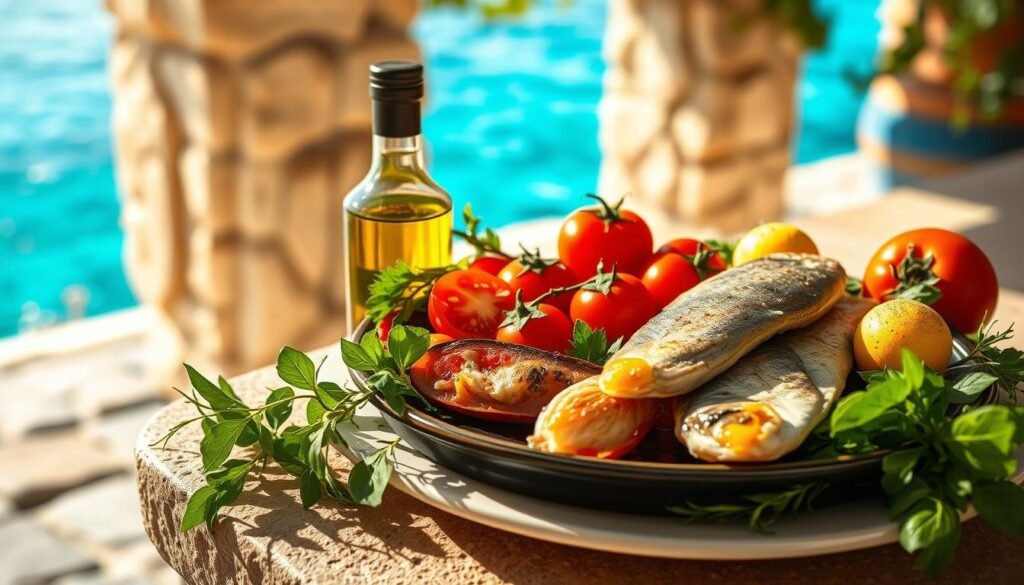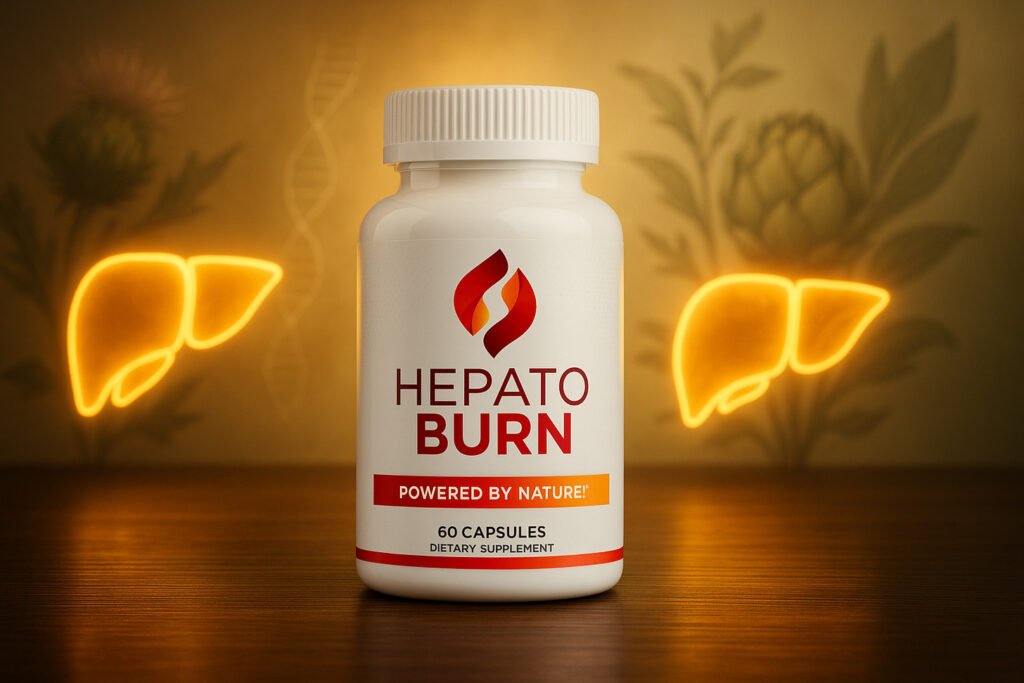
We remember the first time a simple change in meals lifted our mood and steadied our energy.
This approach focuses on plant-forward foods, fish, and extra virgin olive oil to support heart health and lower risk of chronic trouble.
We will share clear, evidence-based guidance rooted in that eating pattern, and later we will assess a HepatoBurn Review with the same scrutiny.
Here, we set realistic serving goals, show how to build meals we can enjoy, and keep choices flexible for different people and tastes.
Our aim is simple: give practical steps that improve measurable markers like blood pressure and cholesterol, while keeping grocery lists and weeknight cooking doable.
Key Takeaways
- Plant-forward meals plus olive oil form the core of a heart-smart routine.
- We emphasize servings and patterns, not strict calorie math.
- Research links this approach to better blood pressure, cholesterol, and blood sugar.
- We’ll cover what to eat, what to limit, and realistic meal plans.
- A clear-eyed supplement review (HepatoBurn) will follow, based on evidence.

What Is the Mediterranean Diet and Why It Works Today
This eating approach grew from mid-20th-century coastal communities and works now because it centers on whole, minimally processed foods. We frame it as an eating pattern built around plants, whole grain staples, fish, nuts, seeds, and olive oil.
Core principles: plant-forward eating and healthy fats
Plants first: vegetables, fruits, legumes, and whole grains form most meals. Healthy fats—especially extra virgin olive oil—replace saturated fats and support heart health.
How it differs from a standard American plate
Compared with a typical U.S. plate heavy in white bread, pasta, sugary drinks, and processed foods, this pattern favors fiber, unsaturated fats, and lower sodium.
“We prioritize simple, real-food meals—grain bowls, roasted vegetables, and fish with greens—that people can keep doing.”
| Focus | Typical American | Our Pattern |
|---|---|---|
| Grains | Refined pasta/bread | Whole grain options |
| Fats | Processed and trans | Olive oil and nuts |
| Dairy | High-fat processed | Greek yogurt, natural cheese |
Mediterranean Diet Food Pyramid: What to Eat More, What to Limit
We organize this food pyramid so the base is foods we reach for every day—plants, whole grains, nuts, and seeds. This layout helps us plan meals that protect heart health and lower chronic disease risk.
Eat often: vegetables, fruits, legumes, whole grains, nuts, and seeds
Daily staples: colorful vegetables and fruits, whole grains like oats, quinoa, and brown rice, plus raw nuts and seeds for snacks.
Legumes should appear several times a week—aim for about three servings weekly. These form the foundation of most meals and snacks.
Choose wisely: fish and dairy in moderation
We recommend fish three times per week (salmon, sardines, tuna) for omega-3s. Poultry replaces most red meat servings.
Greek yogurt and natural cheese add protein and calcium but should not crowd plant foods on the plate.
Use daily: extra virgin olive oil for cooking and salads
Olive oil (preferably extra virgin) is our go-to fat. Aim for 1–4 tablespoons a day for cooking and salad dressings.
Limit: refined grains, added sugars, processed foods, and red meat
Cut back on white flour products, sugary snacks, processed meats, and commercially prepared desserts. Red meat should be rare—none or ≤1 serving per week.
- Practical swaps: whole-wheat pasta, oats, and intact grains instead of refined grains.
- Simple meal ideas: a bean salad with seeds; oatmeal with fruit and nuts; whole-grain bowl with roasted vegetables and a drizzle of oil.
- Portion cues: 1 tbsp oil = one serving; fish serving ≈ 3–4 oz.
| Category | Frequency | Portion cue |
|---|---|---|
| Vegetables & Fruits | Daily | Half your plate |
| Fish | 3 times/week | 3–4 oz |
| Olive oil | Daily | 1–4 tbsp |
“We prioritize whole foods and extra virgin olive oil as the foundation before evaluating supplements.”
Health Benefits Backed by Research
We look at trials and long-term studies that show clear health benefits from a whole-food, plant-forward approach with healthy fats.
Heart outcomes and vascular markers
Higher unsaturated fat intake, fiber, and antioxidants reduce inflammation. This combination supports healthier LDL and HDL numbers and lowers blood pressure.
Metabolic improvements
Whole-food carbs, legumes, and vegetables help steady blood glucose. Studies link this pattern to a lower risk of type 2 diabetes and better metabolic profiles.

Weight, longevity, brain, and gut
Filling, fiber-rich foods help with weight management without strict calorie limits. Long-term data show reduced all-cause disease risk and modest gains in life expectancy.
Polyphenol-rich foods and diverse fibers feed beneficial gut bacteria and may slow cognitive decline over time.
“Sustained adherence, not a single ingredient, delivers most of the benefits.”
| Outcome | Mechanism | Evidence |
|---|---|---|
| Heart health | Unsaturated fats, fiber, low sodium | Lower heart disease risk |
| Metabolic control | Whole grains, legumes, vegetables | Lower type 2 risk, stable blood glucose |
| Brain & gut | Polyphenols, diverse fiber | Better microbiota, slower decline |
We note that olive oil and other elements work best inside the full eating pattern. Our upcoming supplement review will be measured against these broad, evidence-based benefits.
Mediterranean Diet Serving Goals and Portions We Can Follow
Practical serving goals help us turn a healthy eating pattern into everyday meals. Below are clear amounts and a simple weekly cadence to make the plan easy to shop for and prepare.
Daily targets: veggies, fruits, whole grains, and EVOO
Daily goals: aim for ≥3 servings of vegetables and ~3 servings of fruits. Use whole grains at 3–6 servings per day.
- Vegetable serving = ½ cup cooked or 1 cup raw.
- Fruit serving ≈ ½–1 cup; include one with snacks or dessert.
- Whole-grain serving = ½ cup cooked grain or 1 slice of bread.
- Extra virgin olive oil: 1–4 tablespoons daily across meals and salad dressings.
Weekly cadence: fish, legumes, nuts, and poultry
Plan three fish nights (3–4 oz per serving) and three legume servings (½ cup each) per week.
- Nuts: at least three servings weekly (¼ cup or 2 tbsp nut butter).
- Poultry can appear several times; limit red meat to none or ≤1 serving per week.
- Pair beans and grains for budget-friendly, fiber-rich meals that fill us up.
Occasional items: dairy, eggs, and wine (optional)
Keep dairy moderate: 1 cup milk or yogurt, or 1½ oz cheese per serving. An egg yolk daily is acceptable.
- Wine is optional and should not be started for non-drinkers; if used, pair with meals and mind risk.
- These items add variety without crowding plant foods on the plate.
“Track simple amounts, not calories—small rules make lasting habits.”
| Item | Frequency | Portion cue |
|---|---|---|
| Vegetables | Daily | ≥3 servings (½ cup cooked) |
| Fish | 3 times/week | 3–4 oz (deck of cards) |
| Olive oil | Daily | 1–4 tbsp total |
Build Your Meal Plan: Simple Breakfasts, Lunches, Dinners, and Snacks
We show a flexible week of meals that keeps shopping small and cooking realistic. You can mix breakfasts, lunches, dinners, and snacks so meals stay interesting and health-focused.
Breakfast ideas
Quick, filling starts: nonfat Greek yogurt with fruit and walnuts; steel-cut oats with berries and ground flax; whole-grain toast with nut butter; egg-white omelet packed with vegetables.
Lunch favorites
Build grain salads with farro or bulgur, greens, beans, and a drizzle of olive oil. Try a hummus sandwich on whole-grain bread with a side fruit or a quinoa-and-salmon bowl for protein and fiber.
Dinner rotation
Easy dinners include salmon over brown rice and vegetables, cod with lentils, roasted chicken on cannellini beans, chickpea-and-spinach pancakes, or whole-wheat pasta tossed with vegetables and EVOO.
Snack smart
Keep nuts, seeds, fresh fruits, raw veggies with yogurt dip, and whole-grain crackers with hummus on hand. These bridge energy gaps and help us stick to goals.
Practical tips: aim to use beans several times weekly, rotate proteins (fish, legumes, poultry), and finish plates with olive oil for flavor and nutrient absorption.
- Mix and match breakfasts to speed prep.
- Assemble lunch salads with grains, greens, and beans for portability.
- Plan two fish nights, two legume dinners, and one poultry meal per week.
Beverages on a Mediterranean Diet
We center hydration around plain water as the main drink. Water supports digestion, energy, and steady blood levels without added calories.

What to pour with meals
Coffee and tea are fine with minimal sugar and a splash of milk. Keep flavored lattes and sweetened bottled teas rare; they behave like processed foods.
Small amounts of red wine with a meal can be optional for adults who already drink. We do not advise starting alcohol for health reasons — benefits are small and risks rise with higher intake.
What to limit or avoid
Sugary drinks, sweetened juices, and many soft drinks spike blood sugar and add empty calories. Beer and liquor lack the polyphenols found in wine and can reduce the diet’s benefits if overused.
- Sparkling water with citrus complements a salad or fish plate.
- Herbal tea is a good evening choice without caffeine.
- Plain yogurt smoothies or a splash of milk in coffee fit in moderation alongside whole foods like cheese or an egg-based meal.
- Track types and amounts weekly to keep patterns aligned with our health goals and lower long-term risk.
“Water first, mindful choices second — drinks should support meals, not replace them.”
Mediterranean diet: Foods to Avoid and Better Swaps
Small swaps in your pantry cut risk more than short-lived restrictions ever will. We prefer practical replacements that fit weekly routines and taste good.
Refined carbs and processed meats: how to read labels
Look for short ingredient lists and avoid terms like “partially hydrogenated.” These flag trans fats.
Check for added sugars under many names (corn syrup, dextrose) and high sodium in cured meat. That helps us spot risky processed foods quickly.
Smart swaps: whole grains, extra virgin olive oil, and minimally processed foods
Swap examples:
- Whole grain bread for white bread; whole-wheat pasta for refined pasta.
- Oats, brown rice, or quinoa instead of white rice or instant cereals.
- Extra virgin olive oil rather than butter or margarine for sautéing and dressings.
Choose minimally processed cheese and plain yogurt and pair them with vegetables, nuts, and seeds to keep snacks balanced.
“Benefits add up when we raise fiber and unsaturated fat while cutting added sugar, sodium, and industrial trans fats.”
HepatoBurn Review: Does It Fit a Mediterranean Approach?
Before deciding on any supplement, we weigh its claims against the steady benefits produced by whole-food approaches.

What HepatoBurn claims vs. what evidence-based nutrition delivers
HepatoBurn commonly claims faster fat loss, improved liver support, and boosted metabolism. These are attractive promises for people seeking quick change.
Evidence-based nutrition points to a different path: regular use of extra virgin olive oil, three fish meals a week, fiber from beans and whole grains, and lower saturated fats. That pattern shows consistent gains in heart and metabolic health over time.

Our take: prioritize whole foods, EVOO, fish, and fiber over quick fixes
We recommend a “replace before add” plan: swap refined carbs and processed meats for beans, fish, and whole grains; add 1–4 tbsp olive oil daily to meals.
- Supplements may help in specific medical cases, but they rarely match the broad benefits of the food pattern.
- Check labels: third-party testing, clear ingredient amounts, and realistic claims before buying.
- Discuss any product with your provider, especially if you have chronic disease or take medications.
“Supplements should complement—not replace—core dietary changes.”
| Claim | Typical evidence | Our verdict |
|---|---|---|
| Rapid fat loss | Limited, short-term | Unproven long-term |
| Liver support | Depends on ingredient quality | Food pattern safer |
| Metabolism boost | Modest at best | Use cautiously |
Conclusion
Conclusion
We close by recommending a food-first plan: build meals around vegetables, fruits, whole grains, nuts, seeds, and generous extra virgin olive oil.
Choose fish and legumes often, keep cheese and yogurt modest, and limit red meat, added sugars, refined pasta and bread. These small switches lower heart disease and other long-term risk.
Our HepatoBurn takeaway: prioritize whole foods, practical servings, and consistent weekly habits before turning to supplements. Wine is optional and only for people who already drink, and always with meals.
Pick one or two changes this week—a fish dinner or a bean-based lunch—and let momentum grow meal by meal for lasting health benefits.

FAQ
What is the eating pattern and why does it work for heart health?
We follow a plant-forward approach that emphasizes vegetables, fruits, whole grains, legumes, nuts, and seeds, plus healthy fats like extra virgin olive oil. Research links this pattern to lower risk of heart disease, improved cholesterol, and better blood pressure. Choosing fish, Greek yogurt, and minimal processed foods further supports cardiovascular health.
How does this style of eating differ from a standard American plan?
Our focus shifts from processed foods, added sugars, and refined grains toward whole foods and minimally processed ingredients. We use extra virgin olive oil instead of butter or margarine, prioritize seafood over red meat, and aim for whole grains rather than white bread or pastries.
What should we eat most often and what should we limit?
Eat often: vegetables, fruits, legumes, whole grains, nuts, and seeds. Choose fish, Greek yogurt, and natural cheeses regularly. Use extra virgin olive oil daily for cooking and salads. Limit refined grains, added sugars, processed foods, and red meat to occasional servings.
How much extra virgin olive oil is appropriate each day?
We typically recommend a few tablespoons daily as part of salads, dressings, and light cooking. EVOO supplies monounsaturated fats and antioxidants that support heart and metabolic health when used instead of saturated fats.
Can this plan help with blood sugar and type 2 diabetes risk?
Yes. A pattern rich in fiber from whole grains, legumes, fruits, and vegetables helps stabilize blood sugar and lowers the risk of developing type 2 diabetes. Combining these foods with olive oil and regular physical activity strengthens metabolic benefits.
What are sensible weekly portions for seafood, poultry, and legumes?
We suggest aiming for fish at least two times per week, several servings of legumes across the week, and moderate poultry portions. Nuts and seeds can be daily in small amounts, while red meat should be occasional.
Are dairy and eggs allowed, and how often should we include them?
Yes. Choose Greek yogurt and natural cheeses in moderation. Eggs are a good protein source and can be included a few times per week. We view dairy as occasional complement rather than a primary food group.
What are quick, real-food breakfast ideas we can use?
Try Greek yogurt bowls with fruit and nuts, oatmeal topped with seeds and olive oil drizzle, or veggie omelets served with whole-grain toast. These options provide protein, fiber, and healthy fats to start the day.
How should we plan easy lunches and dinners?
Build lunches around salads with beans or fish, whole-grain wraps with hummus, or grain bowls with vegetables and a protein. For dinners, rotate salmon, chickpea and greens sautés, and whole-wheat pasta with plenty of vegetables and EVOO.
What snacks fit well with this eating approach?
Choose fruit, a small handful of nuts, seeds, raw vegetables with hummus, or Greek yogurt. These provide satisfying nutrients without processed sugars or excess refined carbs.
What beverages should we prefer and which should we avoid?
Prefer water, coffee, and tea. Small amounts of red wine with meals are optional for adults who already drink alcohol. Limit sugary drinks, soda, sweetened juices, and excess beer or liquor.
How do we read labels to avoid refined carbs and processed meats?
Look for short ingredient lists and recognizable items. Avoid products high in added sugars, hydrogenated oils, and nitrites. Swap refined grains for whole-grain bread, pasta, and rice, and choose minimally processed proteins like fresh fish or legumes when possible.
Does a supplement like HepatoBurn fit into this approach?
We prioritize whole foods—extra virgin olive oil, fish, fiber-rich grains, and vegetables—over quick-fix supplements. If considering any supplement, consult a healthcare professional and review evidence to ensure safety and benefit.
Can this eating pattern support weight management and longevity?
Yes. Emphasizing fiber, healthy fats, and nutrient-dense foods can help with satiety and long-term weight control. Studies associate this way of eating with longer life expectancy and reduced chronic disease risk when paired with active living.
How do we include wine responsibly if we choose to drink?
If we drink, the recommendation is small amounts—typically one glass per day for women and up to two for men—consumed with meals. Alcohol is optional and should be avoided by those with contraindications or a history of alcohol problems.